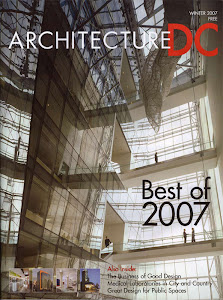Last week, our very own National Mall was overtaken by foreign, green pod-like objects. Aliens were not the ones responsible for this landing, but twenty groups of architecture and engineering students from around the country and world.


This years Solar Decathlon showcased the very best in solar and sustainable design innovation in each of the twenty houses. Each house had to be designed, funded, constructed, transported, assembled and operated to specific restrictions and methods regarding energy efficiency utilizing solar power and green sustainability. The website will give you a very comprehensive look into how each of the teams factored in these requirements. Not only were energy efficiency and sustainability priorities, but great and innovative design also was an important focus. These students proved that solar panels, "living" plant walls, recycled materials, and bulky mechanical room requirements can become design features that visually create some pretty cool architecture. One house utilized its solar panels in the form of a glossy wall system on the front elevation. The wall didn't even appear as solar power until you were standing directly in front. The use of the solar system as a prominent design feature was an innovative way to disguise the fact that it was actually a mechanical system for the house. Another design used a large shipping container as a "core". This element, painted bright orange, was exposed both on the interior and exterior.  It allowed for a cohesive design by connecting the other uniquely textured elements in the architecture. A third example of great design through sustainability, was the use of a "living" plant wall. this entire wall system gave the facade a beautiful texture and color, while at the same time acting as a nice contrast to the more manufactured structural systems of refined wood and steel. A favorite design innovation of mine was the house that actually celebrated the fact that all of these solar systems occupy a lot of space in a mechanical room. Here rather than masking the mechanical space, it is celebrated by housing it in a bright yellow cube that is exposed on the exterior and penetrates through to the interior spaces. Great modern design should be innovative. Sustainable and green innovation is exactly the kind of great modern design culture that catches our attention.
It allowed for a cohesive design by connecting the other uniquely textured elements in the architecture. A third example of great design through sustainability, was the use of a "living" plant wall. this entire wall system gave the facade a beautiful texture and color, while at the same time acting as a nice contrast to the more manufactured structural systems of refined wood and steel. A favorite design innovation of mine was the house that actually celebrated the fact that all of these solar systems occupy a lot of space in a mechanical room. Here rather than masking the mechanical space, it is celebrated by housing it in a bright yellow cube that is exposed on the exterior and penetrates through to the interior spaces. Great modern design should be innovative. Sustainable and green innovation is exactly the kind of great modern design culture that catches our attention.
Read more!







































